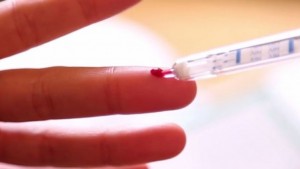 There’s an important news item currently on the aidsmap website:
There’s an important news item currently on the aidsmap website:
Between April 2015 and February 2016, almost 28,000 people have paid £29.95 for a kit allowing them to test for HIV at home, according to a presentation at the British HIV Association conference in Manchester last week. Marketing on Grindr has been important to driving sales, which have been concentrated in non-urban areas.
While both are often promoted as ‘home testing’ for HIV, it’s important to distinguish between self-sampling kits and self-testing kits.
Self-sampling involves the user collecting their own sample and sending it to a laboratory for analysis. Several self-sampling schemes have been promoted by health bodies in recent years, including by Test.HIV and Terrence Higgins Trust.
In contrast, self-testing involves the user performing the whole test themselves – collecting the sample and interpreting the test result. Last April, a commercial company, BioSure, obtained regulatory approval for and marketed the UK’s first HIV self-testing kit. Whereas several self-sampling schemes are provided free of charge to the end user, the self-test is currently only available for purchase through online retailers. It may soon also be available in some high-street chemists.
A rival manufacturer, OraSure, has also obtained European regulatory approval for a self-testing kit, but they have not yet made it commercially available in Europe. OraSure appear to be concentrating on the American market for the moment.
Three-quarters of BioSure’s 27,917 sales have been to men. The most successful form of marketing has been promotion on the gay dating app Grindr, with sales typically quadrupling after Grindr adverts. Sales were also high during HIV Testing Week and on World AIDS Day, but the greatest peak was following Charlie Sheen’s disclosure of his HIV status.
Three quarters of sales have been to people living outside the large cities. Half of those purchasing the test say that they have never tested for HIV before.
These patterns of demand and uptake are broadly similar to those of HIV self-sampling kits. But whereas self-sampling schemes are able to report the number of HIV-positive results in people testing, people self-testing do not need to report their results to anyone. Anecdotally, people getting a reactive result with a self-testing kit often use a variety of other HIV testing services, including community services, in order to confirm the result.
BioSure say that the number of false reactive results reported to them (six cases) is far lower than they expected and represents 0.02% of tests purchased. In addition, 12 people (0.004%) reported having an invalid test – meaning that they were not able to complete the test and read a result.
User feedback has been positive, with 97% saying that they would use the test again and 98% saying that the test was easy to perform. Users appeared to find the test discreet, simple and convenient.
In a plenary, Alison Rodger and Michael Brady said that HIV self-testing might increase rates of HIV testing by removing social and structural barriers, including the time required and geographical distance from testing facilities (particularly for people living in rural areas). Self-testing appears to be attractive to people who particularly value privacy, confidentiality and autonomy. It may facilitate the more frequent HIV testing which is required for harm reduction approaches such as serosorting, disclosure of HIV status and PrEP.
But HIV self-testing may involve harms as well as benefits. A particular concern is whether people getting a reactive result will approach health services for confirmatory testing and will be effectively linked with medical care. We don’t know if some people receiving a reactive result without professional support being immediately available will have particular difficulty dealing with the news. Tests could be used coercively.
Self-tests are not available for bacterial sexually transmitted infections, so there could be a delay in diagnosing these. HIV self-tests are second-generation tests and therefore have a much longer window period than the fourth-generation tests which are used in sexual health clinics. This means that recent HIV infections can easily be missed and this could be a particular problem if self-tests are used by high-risk populations – and are relied upon to make decisions about condom use.
As it is unknown whether the benefits outweigh the potential harms, a large randomised controlled trial called Pantheon will begin soon. It aims to find out whether making HIV self-testing readily available increases the rate of HIV diagnosis, the frequency of HIV testing and the number of gay men who test. The study will also examine the impact of self-testing – and other prevention interventions – on sexual behaviour.
This UK study is being conducted with gay men. There are very few data and very few studies on HIV self-testing in other social groups in high-income countries.
